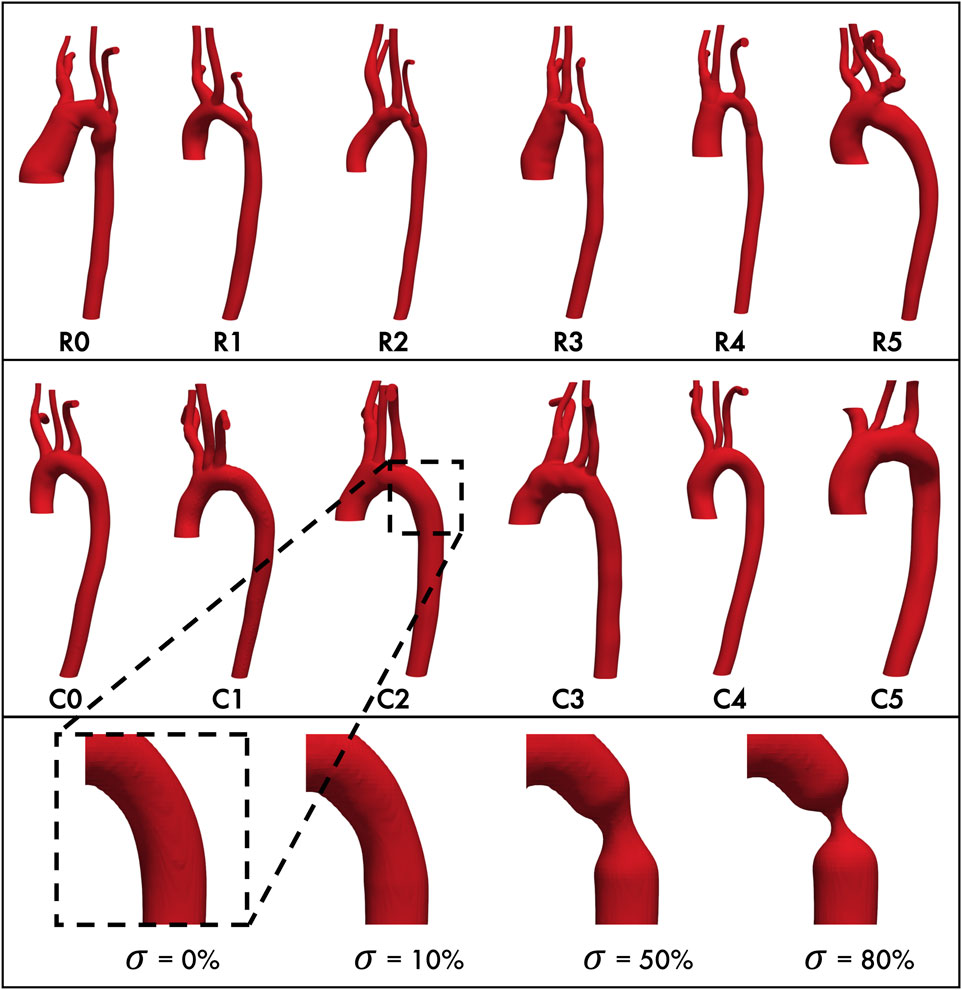A systematic quantification of hemodynamic differences persisting after aortic coarctation repair
Frontiers in Bioengineering and Biotechnology
Christopher Jensen, Arash Ghorbannia, David Urick, G. Chad Hughes, Amanda Randles

Summary
Aortic coarctation (CoA) comprises 6%–8% of all congenital heart diseases and is the second most common cardiovascular disease requiring neonatal surgical correction. However, patients remain at high risk for long-term complications, notably recoarctation.
Methods: Hemodynamic simulations were performed in a group of six patients following CoA repair, as compared to a group of age and sex-matched healthy controls. Progressive narrowing at the CoA repair site was modeled to simulate the recoarctation process. Key measurements included time-averaged wall shear stress (TAWSS) in the aortic arch and CoA repair site.
Results: Repaired aortas demonstrated significantly higher TAWSS compared to healthy aortas in the aortic arch (3.46 vs 1.24 Pa, p < 0.05) and CoA repair site (4.34 vs 1.56 Pa, p < 0.05). A pronounced nonlinear relationship between stenosis severity and TAWSS was observed suggesting that increasing stenosis corresponds to progressively abnormal shear stress.
Discussion: The persistent high TAWSS in CoA-repaired aortas may underlie the poor long-term outcomes observed in this population. The identified nonlinear relationship between stenosis severity and TAWSS magnitude suggests a potential positive feedback mechanism, where abnormal shear stress exacerbates pathologic remodeling in the repaired aorta, highlighting the potential role of hemodynamic simulations in the clinical management of CoA patients.
Citation
Jensen, Christopher, et al. “A Systematic Quantification of Hemodynamic Differences Persisting After Aortic Coarctation Repair.” Frontiers in Bioengineering and Biotechnology 13: 1539256.
